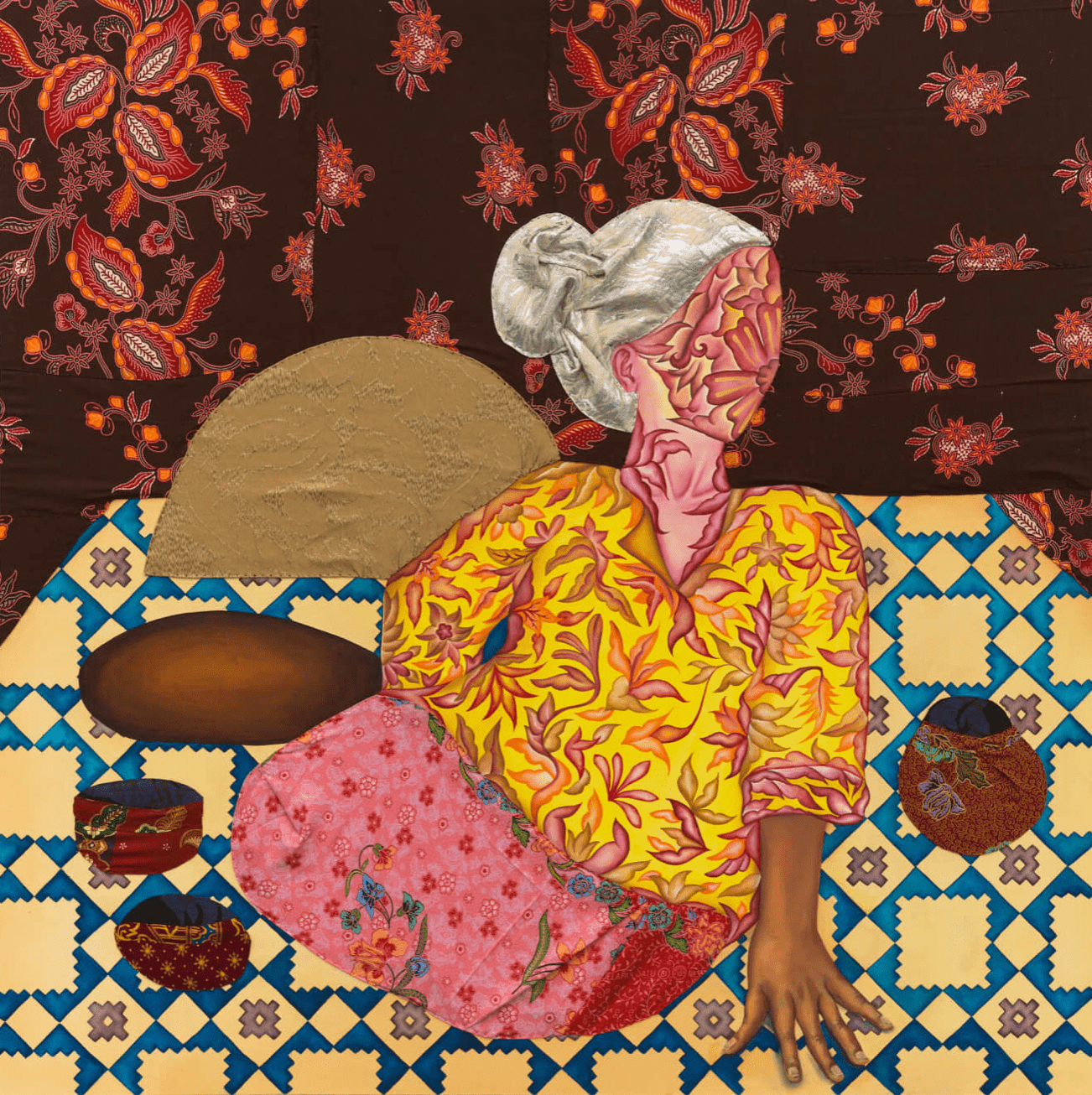January 20 – February 26, 2022
168 Suffolk Street, New York, NY 10002
Batu Belah, Batu Bertangkup: The Devouring Rock, explores and re-interprets the Malaysian folktale by the same name. Sultan’s work navigates ideas of domesticity and prescribed roles of mother and daughter within families and marriage. She is interested in craft and women in the context of de-colonisation and contemporary art.
Batu Belah, Batu Bertangkup tells the story of a widowed mother who lives with her daughter and son. One morning the mother catches a Tembakul (mudskipper) fish full of delicious roe. She asks her daughter to cook the fish and save some roe for her. Her young son, however, is unable to resist temptation and eats his mother’s portion. When she returns to find that her son has eaten her fish and roe, and that her daughter has failed to stop him, she is distraught. Her daughter pleads for forgiveness, but her children’s perceived selfishness causes her to flee to a nearby hill where she throws herself against the side of a rock that consumes her leaving her two children without parents. The story offers a warning to children to keep their promises and be sensitive to the hardships of their parents.
Sultan’s reframing of this story in six intricate patterned oil paintings with hand stitched fabric elements reimagines the events from the perspective of the daughter. Fairy and folk tales often present mothers and daughters as reflections of each other or as rivals. These tropes serve to cement women into their social places. For Sultan, this story has been about the responsibilities placed on girls and young women, and she strives to take a more critical approach to the narrative. She notes, “often in fairy tales and myths the mother daughter relationship is troubled, the mother figure is either the villain or the comfort. In Batu Belah, this is more complex, the mother is experiencing her own trauma, which is reflected through her actions and she unknowingly shifts responsibility to her daughter.”
Sultan’s decision to obscure the character’s faces with hand painted batik patterns give them a sense of universality. Sultan expresses the emotions of each woman through their hands and uses their hair as a representation of their emotional state and identity. In the final painting, Not my burden to bear., we see a release and freedom and for the first time see her from the front, providing a powerful view of the full batik flower pattern Sultan placed at the center of the face. Incorporating these patterns was important to Sultan, who has an ongoing interest in craft, textiles, and traditional artistic medium. For Sultan, using loaded patterns as way to push back against the relegation of cultural, religious art or traditionally feminine crafts being to “low” art and to pull them out of the margins to the center of the contemporary art world.
Trotter&Sholer is pleased to present Batu Belah, Batu Bertangkup: The Devouring Rock, on view at 168 Suffolk Street, through February 26, 2022.
